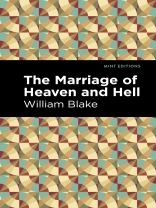Written in the form of biblical prophecy, The Marriage of Heaven and Hell presents philosophical ideas about God, humanity and the complex nature of ethics. It’s a bold yet humorous examination of binary belief systems and their conflicting principles.
The Marriage of Heaven and Hell is a remarkable narrative that explores common religious themes such as good versus evil. The author uses vibrant storytelling to expand on the importance of these contradictory terms. He details how competing ideals are integral to the human experience. Without them, a person may remain stagnant and never reach their full potential. Progress cannot occur without the tension stemming from love and hate, reason and energy, or attraction and repulsion.
William Blake’s The Marriage of Heaven and Hell uses stunning visuals and metaphors to discuss the nuances of man. His unique perspective highlights fundamental differences that embody the human condition. Within the text, Blake investigates the greatness the is often found in struggle.
With an eye-catching new cover, and professionally typeset manuscript, this edition of The Marriage of Heaven and Hell is both modern and readable.
Since our inception in 2020, Mint Editions has kept sustainability and innovation at the forefront of our mission. Each and every Mint Edition title gets a fresh, professionally typeset manuscript and a dazzling new cover, all while maintaining the integrity of the original book.
With thousands of titles in our collection, we aim to spotlight diverse public domain works to help them find modern audiences. Mint Editions celebrates a breadth of literary works, curated from both canonical and overlooked classics from writers around the globe.
Про автора
William Blake (1757–1827) was an English poet and visual artist often linked to the Romantic movement. As a youth in London, he was primarily educated at home before becoming an engraver’s apprentice. Later, Blake would attend the Royal Academy and eventually find work in publishing. His debut, Poetical Sketches, was printed in 1783 followed by Songs of Innocence in 1789. The latter is arguably his most popular collection due to its vivid imagery and thought-provoking themes.












